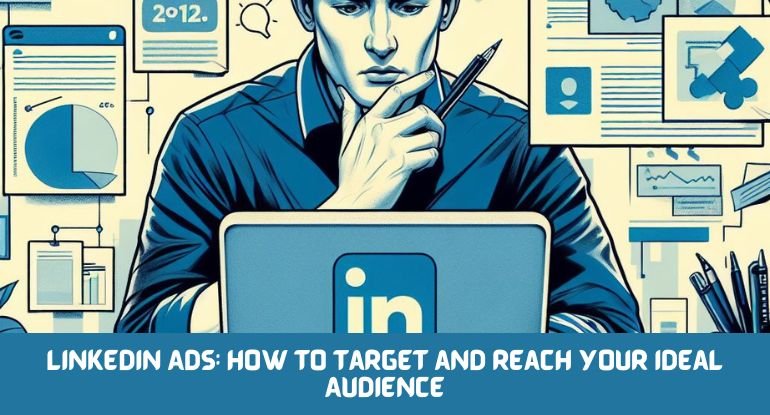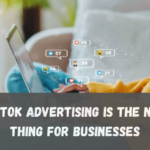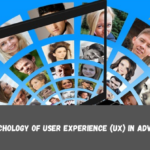Introduction
Do you know that LinkedIn is the world’s largest professional network? It offers a powerful advertising platform for businesses looking to connect with decision-makers and professionals. However, with over 900 million users, accurately targeting your ideal audience can feel daunting.
This guide will equip you with the knowledge and best practices to optimize your LinkedIn Ads targeting, ensuring your message reaches the right people at the right time.
7 Reasons LinkedIn Ads Targeting Worth it
#1. Reaching the right audience: LinkedIn offers an unparalleled level of targeting specificity, allowing you to reach professionals based on a wide range of criteria including job title, industry, company size, seniority, education, and even skills.
This ensures your ads are shown to individuals most likely to be interested in your product or service, maximizing your return on investment.
#2. B2B marketing powerhouse: LinkedIn is the go-to platform for B2B marketing, with a user base comprised primarily of professionals and decision-makers. By targeting your ads on LinkedIn, you can ensure you’re reaching the right people within your target organizations.
#3. High engagement rates: LinkedIn users tend to be more engaged with the platform than users on other social media channels. This translates to higher click-through rates and conversion rates for your LinkedIn Ads campaigns.
#4. Building brand awareness and credibility: Consistent, targeted advertising on LinkedIn can help build brand awareness and establish your company as a thought leader within your industry. This can lead to improved brand perception and increased trust among potential customers.
#5. Lead generation: LinkedIn Ads offer various tools and formats designed specifically for lead generation, such as Lead Gen Forms and Sponsored InMail. These tools allow you to capture valuable leads directly within the platform, driving conversions and increasing sales.
#6. Campaign optimization and insights: LinkedIn Ads provides detailed analytics and reporting, allowing you to track the performance of your campaigns and make informed decisions about optimization. This insight enables you to refine your targeting, adjust your budget, and improve the effectiveness of your advertising efforts.
#7. Cost-effective and scalable: Compared to other advertising platforms, LinkedIn Ads can be surprisingly cost-effective, especially when considering the high engagement rates and targeted reach.
Additionally, campaigns can be scaled up or down as needed, making them flexible for businesses of all sizes.
By leveraging the power of LinkedIn Ads targeting, you can achieve greater success in your marketing goals. Let us learn how to understand your ideal audience.
Step-By-Step Guide to Understanding Your Ideal Audience

Before diving into LinkedIn Ads Manager, it’s crucial to have a clear understanding of your ideal audience. Define their demographics, job titles, company sizes, industries, and other relevant characteristics.
This detailed profiling serves as the bedrock for crafting a laser-focused targeting strategy.
Picture this: a marketing campaign that doesn’t merely reach a wide audience but speaks directly to the individuals most likely to convert into valuable leads or customers. That’s the power of precise targeting on LinkedIn.
To navigate this process effectively, consider these pivotal questions:
#1. Defining the Ideal Customer Profile: Who precisely are you aiming to reach? Create a detailed profile encompassing their professional attributes and aspirations.
#2 Addressing Needs and Challenges: What pain points does your solution alleviate for this audience? Understanding their challenges helps tailor your message effectively.
#3 Mapping Online Presence: Where does your audience spend their digital time? Identifying their preferred social media platforms, particularly LinkedIn groups and communities, aids in precise targeting.
#4 Analyzing Interests and Behaviors: What content resonates with them? Scrutinize their online behavior and preferences to align your ad content accordingly.
By meticulously answering these queries, you can gain invaluable insights into your target audience, paving the way for ad customization that maximizes impact.
Types of LinkedIn Ads
LinkedIn has different types of ads to help you reach your goals. Let’s break them down:
#1. Sponsored Content:
This is the most common type of LinkedIn ad. It appears in users’ news feeds, blending seamlessly with organic content. It is available in the following formats:
- Single image ads: these consist of a single image with a headline, description, and call to action (CTA) button. They are good for promoting products, services, blog posts, or landing pages.
- Video ads: The format include a short video and most effective for storytelling, product demos, and explainer videos.
- Carousel ads: These include Multiple images or videos (up to 10) in a single ad, each with its own headline and description. They are great for showcasing multiple products, services, or features, and for telling a longer story.
- Event ads: Promote upcoming events, such as webinars, conferences, or product launches. These help to increase event attendance and engagement.
- Document ads: Promote downloadable documents, such as white papers, e-books, or case studies. They increase the generation of leads and capturing of valuable contact information.
Sponsored content is highly visible, drives engagement and clicks, versatile format for various objectives.
#2. Message Ads:
This type allows you to send personalized messages directly to people’s inboxes. They’re great for starting conversations and getting people interested.
3. Dynamic Ads:
These ads change based on who’s seeing them. They are automatically generated based on users’ profiles and activity. They can be images or videos that fit the viewer, making them more likely to grab attention.
4. Text Ads:
Simple ads with just text, usually on the side of the page. They’re good for getting your brand out there without being too fancy. They are affordable and can be used alongside other ad formats.
5. Spotlight Ads:
These ads are right at the top of your feed, so they’re hard to miss. They’re perfect for making a big announcement or showcasing something important.
When picking the right ad type, think about what you want to achieve (like getting more customers or making people aware of your brand), who you want to reach, how much money you have to spend, and if you can create good-looking ads.
Knowing about these ad types helps you make smart choices for your business. It’s all about picking the ads that match your goals and speak best to your ideal audience!
Targeting Strategies on LinkedIn Ads
LinkedIn Ads offers a diverse range of targeting options, allowing you to reach your audience based on:
#1. Professional Data:
- Job Titles: Pinpoint specific job titles or categories relevant to your offerings.
- Companies: Reach professionals affiliated with particular industries or organizations.
- Skills and Experience: Target users with defined skill sets or varying levels of expertise.
- Education: Tailor ads based on educational backgrounds or attained degrees.
#2 Demographics:
- Location: Precision-target users by country, state, city, or even specific postal codes.
- Age and Gender: Refine audience parameters based on demographic specifics aligned with your offerings.
#3 Interests and Behaviors:
- Groups: Engage members of LinkedIn groups pertinent to your industry or niche interests.
- Following: Target users who follow specific companies, influencers, or trending topics.
- Website Retargeting: Re-engage users who’ve interacted with your website or content.
- Lookalike Audiences: Extend outreach to users mirroring characteristics of your existing clientele or site visitors.
Strategic utilization of these targeting options empowers you to curate precisely targeted campaigns that resonate deeply with your ideal audience.
Best Practices for Effective Targeting on LinkedIn
Mastering the art of targeting involves adherence to these best practices:
#1. Gradual Refinement: Begin your LinkedIn advertising with broader targeting parameters. This might include a larger demographic or interest group. As your campaign gathers data on performance metrics like click-through rates or conversions, use this information to refine your targeting.
For instance, if certain demographics or interests are responding better to your ads, adjust your targeting to focus more on those segments for improved results.
#2. Layered Targeting: Combine multiple targeting criteria to create a more defined and specific audience. LinkedIn offers various options for targeting, such as industry, job title, company size, location, and more.
By layering these criteria, you can create a more precise audience profile that aligns with your campaign objectives. For instance, you might target marketing managers specifically in the technology industry within a certain geographic location.
#3. Continuous Testing: Always run tests with different targeting combinations to understand what works best for your campaign. This involves creating variations in your targeting parameters (demographics, job titles, industries, etc.) and measuring their performance.
Based on the results, optimize your campaign by allocating more budget to the targeting options that yield better outcomes.
#4. Utilize Templates: LinkedIn offers pre-built audience templates tailored for specific industries or job roles. These templates are designed based on LinkedIn’s extensive data and insights, making them a convenient starting point for targeting. They can serve as a foundation that you can further customize to suit your campaign goals better.
#5. Avoid Over-Restriction: While precision targeting is important, avoid being too restrictive with your audience parameters. Overly narrow targeting might limit your campaign’s reach and potential engagement.
It is very important to strike a balance between precision and reach to ensure that your ads are seen by a relevant audience while still reaching a substantial number of potential leads or customers.
#6. Use Sales Navigator: LinkedIn’s Sales Navigator offers advanced targeting options based on in-depth professional insights. It provides access to more detailed information about professionals, including job changes, company updates, and interests.
Integrating Sales Navigator data into your advertising strategy allows for more sophisticated and nuanced targeting based on these insights.
#7. Data Analysis: Monitor key performance metrics such as impressions, clicks, conversions, and cost-per-acquisition regularly. Analyze this data to evaluate the effectiveness of your targeting strategies.
Identify trends or patterns to understand which targeting parameters are driving the best results. This analysis will help in refining your targeting further for future campaigns.
#8. Content Relevance: Ensure your ad content aligns with the targeted audience’s interests, needs, and pain points. Tailoring your messaging to resonate with your audience increases the likelihood of engagement and conversions.
#10. Dynamic Ads: Utilize LinkedIn’s dynamic ad formats that automatically personalize content based on the viewer’s profile data. These ads dynamically adjust elements like the user’s name, image, or job title, enhancing relevance and engagement.
#11. Landing Page Optimization: Ensure the landing page linked to your ads is optimized for conversions. A seamless and relevant user experience from the ad to the landing page increases the likelihood of users taking the desired action.
#12. Ad Scheduling: Consider the timing of your ad delivery. Analyze when your target audience is most active on LinkedIn and schedule your ads to reach them during these peak times for better visibility and engagement.
#13. Budget Allocation: Monitor and adjust your budget allocation based on the performance of different targeting options. Allocate more budget to the targeting parameters that yield better results to maximize ROI.
#14. Competitor Analysis: Research and analyze your competitors’ LinkedIn advertising strategies. Understanding their targeting methods, ad content, and engagement levels can provide valuable insights for refining your campaigns.
#15. Engagement Tracking: Track user engagement beyond initial clicks or impressions. Monitor post-click behavior, such as time spent on your website or specific actions taken, to gain insights into the quality of traffic generated by your ads.
#16. Creative Refresh: Regularly update and refresh your ad creatives to prevent ad fatigue and maintain audience interest. Fresh content helps in sustaining engagement and attracting new leads.
How to Measure the Success of Your LinkedIn Ad Campaigns

Measuring the success of your LinkedIn ad campaigns is crucial for understanding their effectiveness and making informed decisions about future strategies. Here are some key ways to measure the success of your LinkedIn ad campaigns:
#1. Define Clear Goals and Objectives:
Before you even launch your campaign, clearly define what you want to achieve with your LinkedIn ads. Common goals include:
- Brand awareness: Increase brand visibility and recognition.
- Lead generation: Generate leads for your sales team.
- Website traffic: Drive traffic to your website or landing page.
- Engagement: Increase engagement with your content (e.g., likes, comments, shares).
- Conversions: Drive specific actions, such as purchases or downloads.
Once you have defined your goals, establish SMART metrics to track progress. These metrics should be Specific, Measurable, Achievable, Relevant, and Time-bound.
#2. Monitor Key Performance Indicators (KPIs):
LinkedIn Ads provides a wealth of data and analytics tools to help you track the performance of your campaigns. Some of the key KPIs to monitor include:
- Impressions: The number of times your ad was seen.
- Clicks: The number of times your ad was clicked.
- Click-through rate (CTR): The percentage of impressions that resulted in a click.
- Cost-per-click (CPC): The average amount you pay for each click on your ad.
- Engagement rate: The percentage of impressions that resulted in an engagement (e.g., like, comment, share).
- Cost-per-acquisition (CPA): The average amount you pay for each conversion (e.g., lead, sale).
- Conversion rate: The percentage of clicks that resulted in a conversion.
#3. Utilize LinkedIn Analytics:
Leverage LinkedIn’s native analytics tools like Campaign Manager and LinkedIn Page Analytics to gain detailed insights into your campaign performance. These tools provide data on demographics, engagement, website traffic, and conversions, allowing you to identify trends and areas for improvement.
#4. Track Conversions:
Go beyond clicks and track the actions that matter most to your business goals. Set up conversion tracking in Campaign Manager to measure the number of leads generated, website purchases, or other desired outcomes. This will help you determine the true ROI of your campaigns.
#5. A/B Testing:
Test different variations of your ad creatives, targeting, and bids to optimize performance. A/B testing allows you to compare different versions of your ads and identify what works best for your audience.
#6. Benchmarking:
Compare your campaign performance against industry benchmarks to understand how you stack up against your competitors. This can provide valuable insights into your strengths and weaknesses.
#7. Analyze and Adapt:
Regularly analyze your campaign data and identify areas for improvement. Don’t be afraid to adjust your targeting, creatives, or bids based on your findings. By analyzing results and adapting your approach, you can continuously improve the effectiveness of your LinkedIn ad campaigns.
Conclusion
LinkedIn Ads are a powerful asset in B2B marketing strategies, yet success hinges upon a deep understanding of the target audience and adept use of precise targeting strategies.
By leveraging the platform’s diverse targeting options, best practices, and continuous optimization, you can create campaigns that resonate with your ideal audience and drive significant business outcomes.






